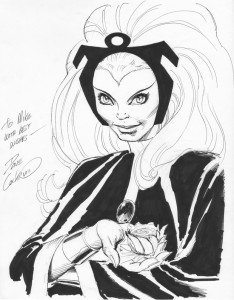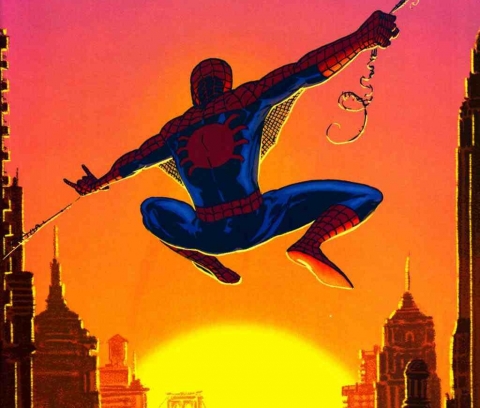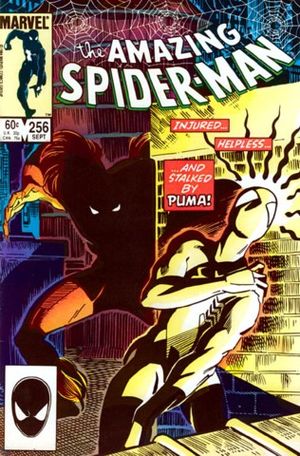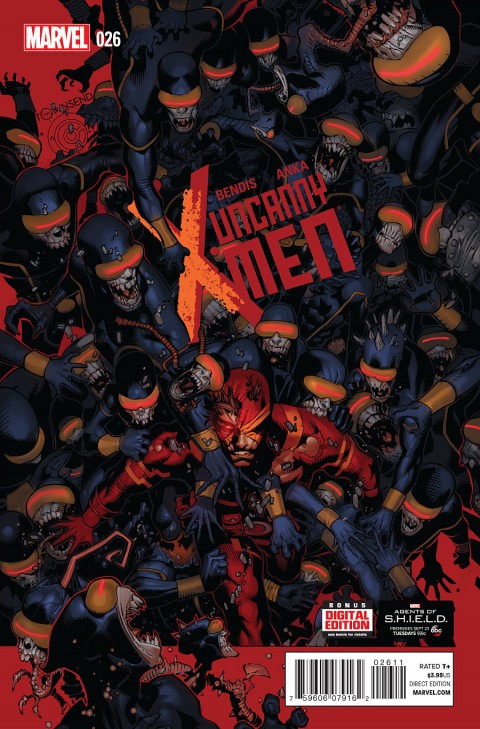I recently came across a very interesting study about women comic book readers. It was done by a comics blogger named Brett Schenker, who looked at the number of Facebook “likes” of comic book related terms. Schenker looked at the demographic breakdowns of these Facebook likes and it showed that 40% of these likes came from women. This is only one study and it is somewhat skewed because Facebook is generally used by more women than men. However, this could also indicate a broader change going on in the comic book industry, namely greater participation by women in the comic book industry.
For me, this forty percent figure exaggerates the actual percentage of women comic book readers. My own experiences from attending Comic Cons and comic book stores in Vancouver would put the figure more at about twenty percent of comic book readers being women. The comic book industry is still largely dominated by men. Most of the well-known and most popular superheroes are male. Collectors routinely undervalue comics featuring female characters. Consider that the Overstreet Price Guide pegs near mint minus copies of Superman’s first appearance issue (Action #1) at $1.9 Million, Batman’s first appearance issue (Detective Comics #27) at $1.5 Million, and Wonder Woman’s debut issue (All Star Comics #8) checks in at a measly $90,000. Throughout the Golden and Silver Ages of comics, female characters played minor roles in the burgeoning comic book industry. The women were present during these early periods in comics, but the recognition would come very slowly.
I believe that greater participation by women in comics really started happening during the Bronze Age of comics (1970 to 1985), and this progresses in fits and starts into the Modern Age of comics. During the 1970s and 1980s, more and more female comic characters and women writers came onto the scene, and they became more interesting and more prominent than ever before.
 As a male reader, the first female character that grabbed my attention was the X-man (ahem) Storm, who first appeared in Giant-Size X-men #1, smack dab in the middle of the Bronze Age. I love Storm’s incredible back-story of being an African weather “goddess”, orphan, and one-time thief in the streets of Cairo. Storm also went through interesting changes: she started out as a wide-eyed newcomer to America, progressed to become the leader of the X-Men, and later became punk haired and de-powered.
As a male reader, the first female character that grabbed my attention was the X-man (ahem) Storm, who first appeared in Giant-Size X-men #1, smack dab in the middle of the Bronze Age. I love Storm’s incredible back-story of being an African weather “goddess”, orphan, and one-time thief in the streets of Cairo. Storm also went through interesting changes: she started out as a wide-eyed newcomer to America, progressed to become the leader of the X-Men, and later became punk haired and de-powered.
Actually throughout the seventies, eighties and nineties, the X-Men comics and animated series introduced incredibly interesting female characters. Besides the introduction of Storm, Jean Grey became the all-powerful Phoenix entity. A woman has made it to the pinnacle of comic book success when she has become the most powerful cosmic entity in the universe, right? After Jean/Phoenix, I read and watched X-men stories that introduced me to other awesome superheroines such as Rogue, Kitty Pryde, and Jubilee. The X-Men and related titles also featured great writing and editing by women writers such as Ann Nocenti and Louise Simonson.
Over at DC Comics, I noticed that writers such as Mindy Newell and Gail Simone have done great jobs in raising the profile of female characters. In the past decade, Gail Simone, in particular, has elevated the status of characters such as Wonder Woman, the members of the Birds of Prey, and controversially, Batgirl. While DC has transformed these characters into icons of female empowerment, it has also been accused of taking a step back when some readers noticed that only one percent of its “New 52” creative staff were women.
Just recently, Marvel Comics has revitalized the character Carol Danvers/Ms. Marvel. The writer Kelly Sue Deconnick renamed her Captain Marvel, and in the process gave her more depth and greater powers. I like the sound of “Captain Marvel” because it really elevates Carol Danvers and makes her on par with the big boys in the field. It sounds powerful, like Captain America.
I’ve done a quick survey her of the female superheroes and writers that I know. There are many others that I haven’t mentioned because I haven’t read their works and I haven’t even touched on the good things that male writers and male superheroes have done to advance the status of women in comics.
I also see more female writers than female artists out there, but maybe I’ve just read titles that have more female writers than female artists. Just recently, I read some issues of Saga and I really enjoyed the artwork of Fiona Staples, but I haven’t really found other comics drawn by women. As you probably know, more work needs to be done to advance the status of women in comics. When most of the famous comic book characters are muscular, white, and male, we need to approach the genre from other angles.
Post your comments to this article. Since no rigorous study has been done about the number of female comic book readers, what do you think is the actual percentage of female comic book readers? What is your favourite comic book issue that featured a female character?




Wow Peter, the price disparity between the Golden Age Superman, Batman and Wonder Woman 1st appearances is jarring. Funny I’ve never really looked at these prices through the gender lens. Interesting point.
I’ll pick the Electra storyline in DD as one of my favorite comic stories with a central female hero.
The first Superman issue is more than 20 times the value of a the first Wonder Woman, which is quite shocking. Maybe it’ll be in the next Undervalued spotlight?
The Frank Miller DD-Electra story arc is one of my favorites too. It seems that Marvel originally promised not to resurrect Electra without Frank Miller’s permission. She is definitely a great character and Marvel keeps bringing her back. I don’t know if they ever got Frank Miller’s permission.
1) “This is only one study and it is somewhat skewed because Facebook is generally used by more women than men”
Actually for the United States, users of Facebook as far as gender mirrors the US population quite closely.
2) Gender has little to do with the different values. Circulation, what they represent, etc. are much more important and indicative. Without Action Comics #15, there would be no Wonder Woman in All Star Comics.
3) There were numerous female heroines during the Golden Age. One just can look at Dynamite’s revival of many of them for example.
4) There were also numerous female creators during this time as well. They might not as well known as Kane, Lee, Kirby, etc, but their contributions were numerous and overlooked. There’s a lot of scholarly work occurring now to shed a light on that overlooked bit of comics fact.
Does this mean that Canadians are out of kilter? The most expensive Canadian White is probably Triumph Comics No. 1 simply for the fact that it features the first appearance of Nelvana, the first female superhero ever. In the last Clink auction the Nelvana reprint one-shot went for many multiples of the price of almost every other of the 36 Whites on auction. In this closed system those comes that contain Nelvana appearances are just about the most sought after and most valuable Whites.
Hi Brett,
Thanks for your comments. Yes, Wonder Woman’s first appearance comic came out later, about 3 and a half years after Action #1. And yes Action #1 and Detective #27 are more important books and more valuable, but I still feel it unwarranted that an important book as All Star Comics #8 is worth less than 5% the value of Action #1.
On the other hand, first appearance comics of other female characters are rising to where they should be at. For example, the values of first appearance issues of the Black Widow (Tales of Suspense 52) and Batgirl (Detective #359) have risen to a fair market value because of renewed interest in these characters.
Yes, there were early female comic creators that I didn’t have space to cover or didn’t know about it. Thanks for pointing these out. Article was my own opinion about the current state of women in comics.
Hi Ivan,
It’s great to hear that the Nelvana comics are getting their due. But comics of other Golden Age female characters (e.g. Namora or Miss America) still seem undervalued.
“Actually for the United States, users of Facebook as far as gender mirrors the US population quite closely.”
Not true, actually.
http://www.adweek.com/news/technology/study-women-love-social-media-more-men-unless-its-linkedin-154671
http://www.entrepreneur.com/article/231970
http://blog.hootsuite.com/5-ways-women-drive-social-media/
I strongly believe that women are continuing to make a larger contribution to the readership of comic books. Marvel is doing an excellent job at developing their female characters. In comparison, DC is sorely lacking. This is quite a shame because DC has a wonderful host of heroines that are overlooked and undervalued. I personally adore Wonder Woman yet I still do not believe DC is bringing her to her full potential.
I do agree that Saga is absolutely excellent. It is definitely my newest obsession.
well superman is the first superhero comic so obviously it will be more iconic and have more value. also i think there’s a lot of fake female representation in comics, carol danvers became captain marvel and they have tried to make her seem a little flat, more manly and make her look like a guy. that’s not how a lot of females look. i think if they kept her original look when she was ms. marvel it would have a more positive message: that women can be strong and feel good enough about themselves to wear clothes that reveal their bodies a lot more then regular clothes. just my opinion.